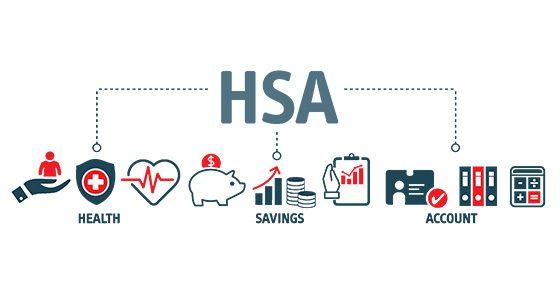Hey there! If you’ve ever felt a little overwhelmed trying to figure out how health expenses and insurance work together, you’re not alone. That’s where Health Savings Accounts, or HSAs, come in to save the day. They’re kind of like a secret weapon for managing medical costs, giving you more control (and peace of mind) when it comes to your health and your wallet. In this friendly guide, we’ll break down exactly how HSAs work, why they might be a smart choice for you, and tips on making the most out of them—without all the confusing jargon. Ready to become an HSA pro? Let’s dive in!
Table of Contents
- Understanding the Basics of Health Savings Accounts
- Maximizing Your Contributions for Bigger Savings
- How to Use Your HSA Funds Without Stress
- Tips for Choosing the Right HSA Provider for You
- Closing Remarks
Understanding the Basics of Health Savings Accounts
Health Savings Accounts (HSAs) are a fantastic tool for managing your healthcare expenses while also enjoying some tax advantages. At their core, HSAs are savings accounts specifically designed to help you set aside money for qualified medical costs. The beauty is that these funds can be used to pay for everything from doctor visits and prescriptions to dental care and even some over-the-counter medications. Plus, the money you deposit into an HSA is tax-deductible, meaning you get to keep more of your hard-earned cash.
Here’s what makes HSAs truly stand out:
- Triple tax benefits: Contributions are tax-deductible, growth is tax-free, and withdrawals for eligible expenses don’t get taxed.
- Rollover feature: Unlike Flexible Spending Accounts (FSAs), unused money in your HSA rolls over year to year — no “use it or lose it” pressure.
- Portability: Your HSA stays with you no matter where you work or live, giving you financial flexibility.
Maximizing Your Contributions for Bigger Savings
One of the smartest ways to unlock the full power of your Health Savings Account is by fully utilizing the annual contribution limits set by the IRS. Maxing out your contributions not only boosts your tax savings but also grows your fund for future medical expenses. Keep in mind, contributions made before the tax deadline can still count for the previous year, giving you some flexibility to maximize your savings even after the calendar year ends.
Here are a few tips to help you contribute wisely and increase your HSA balance over time:
- Set up automatic transfers from your paycheck or bank account to build your savings effortlessly.
- Take advantage of catch-up contributions if you’re 55 or older—this means extra money added on top of the usual limit.
- Review your budget regularly to find small ways to redirect funds into your HSA, creating a comfortable cushion for unexpected health costs.
How to Use Your HSA Funds Without Stress
Using your HSA funds should feel seamless, not stressful. The key is knowing what qualifies as an eligible expense. From doctor’s visits and prescription medications to chiropractic care and even certain over-the-counter products, your HSA can cover a broad range of health-related costs. Keep your receipts and statements organized—they’re your best defense if you ever need to prove your spending was qualified. Another tip: many HSAs offer debit cards, making it easy to pay directly from your account without fronting the cash yourself.
Don’t forget that you can also use your HSA funds for future medical expenses. Some folks prefer to pay out-of-pocket now while letting their HSA balance grow tax-free. When the time comes, you can withdraw the money tax-free, too. To keep things stress-free, consider these simple steps:
- Track your expenses: Use apps or spreadsheets to log every HSA purchase.
- Know your deadlines: Some expenses must be incurred after your HSA was established to qualify.
- Consult IRS guidelines: Stay updated on what counts as qualified medical expenses.
Tips for Choosing the Right HSA Provider for You
When scouting for the perfect HSA provider, it’s essential to look beyond the basic account features. Consider factors like fees, investment options, and the ease of managing your account online. Some providers may charge monthly fees or require minimum balances that could eat into the savings you’re trying to build. Others might offer a variety of investment choices, allowing your funds to grow tax-free over time—a game-changer if you’re planning for long-term healthcare expenses. Additionally, a user-friendly website or app makes managing your account hassle-free, giving you quick access to your balance, transaction history, and investment performance.
It’s also wise to explore the level of customer support and educational resources the provider offers. Having a team ready to clarify doubts or guide you through HSA rules can be a lifesaver, especially when tax season rolls around. Look for providers with strong reputations, transparent policies, and features like mobile check deposits or seamless integration with your health plan. Here’s a quick checklist to keep handy:
- Competitive fees and minimum balance requirements
- Robust investment options tailored to your risk comfort
- Intuitive online portal or mobile app
- Responsive customer service team
- Educational tools and clear account statements
Closing Remarks
And there you have it—a friendly rundown of how Health Savings Accounts work! Whether you’re looking to save on taxes, build a healthcare safety net, or simply take charge of your medical expenses, an HSA can be a smart tool in your financial toolkit. Remember, it’s all about finding what fits your lifestyle and health needs best. So take a moment, explore your options, and start making your health—and your wallet—happier. Thanks for reading, and here’s to healthy saving ahead!






